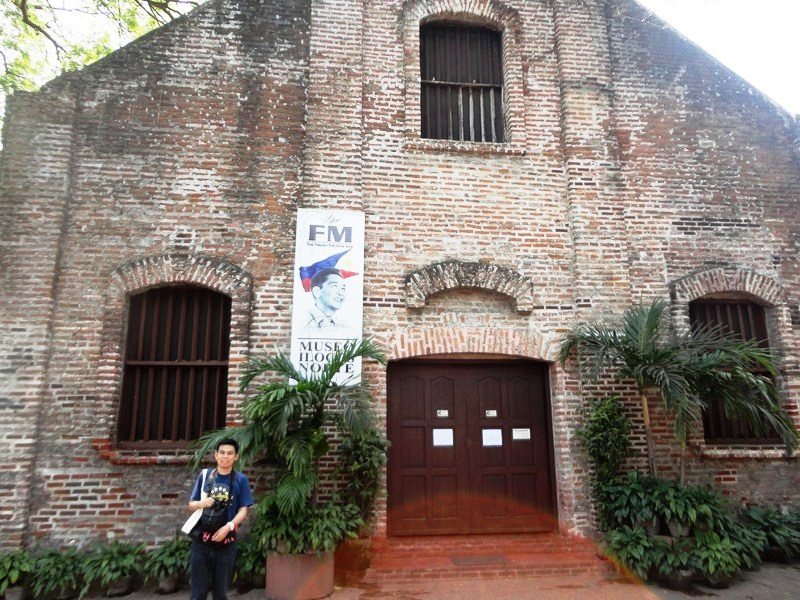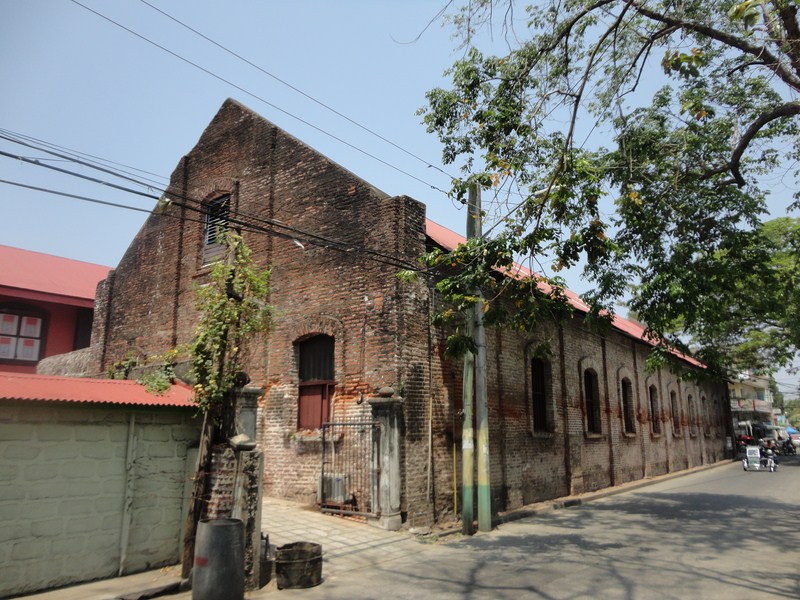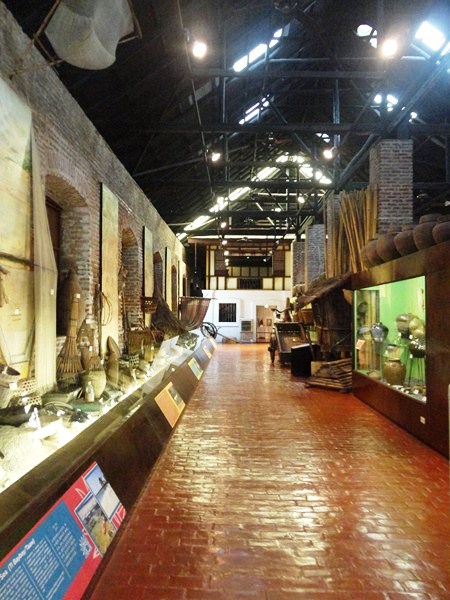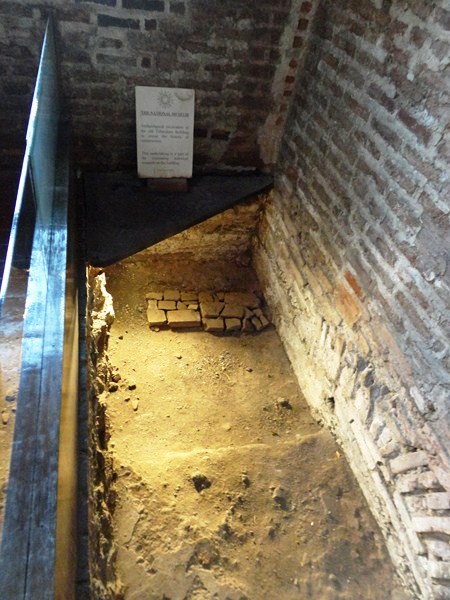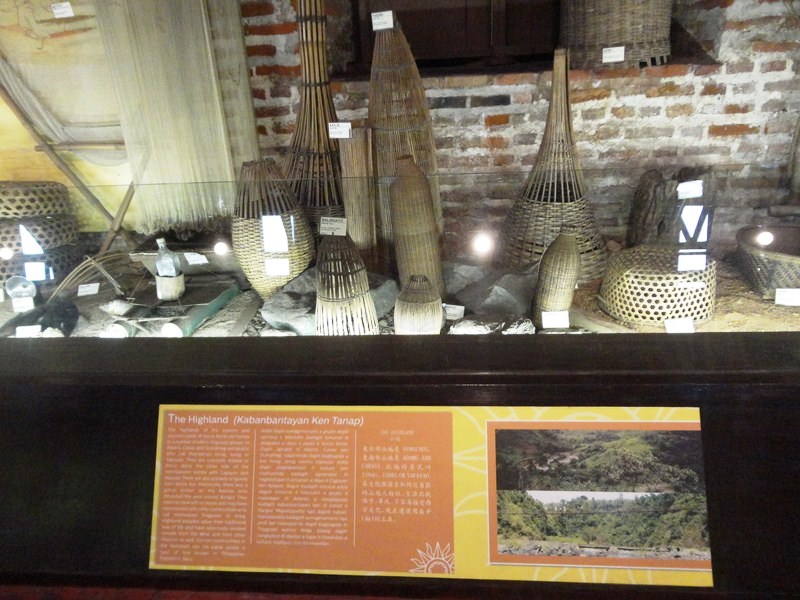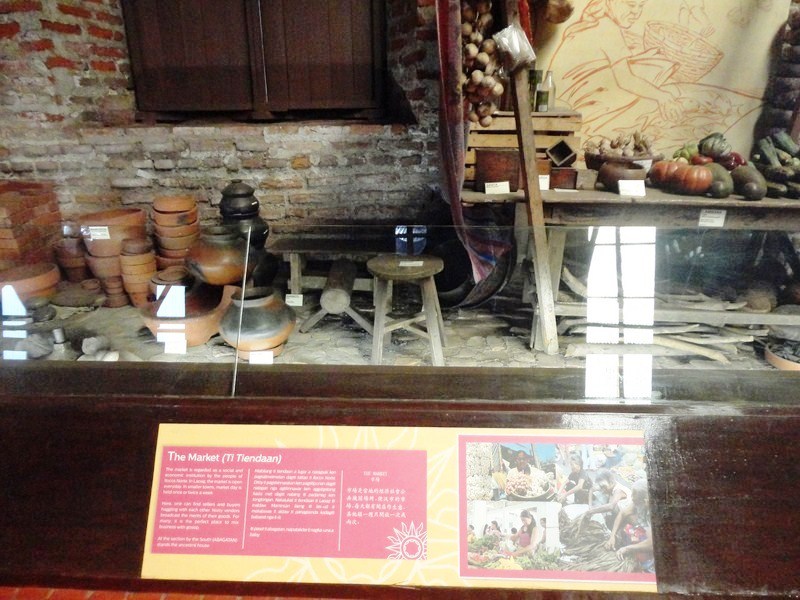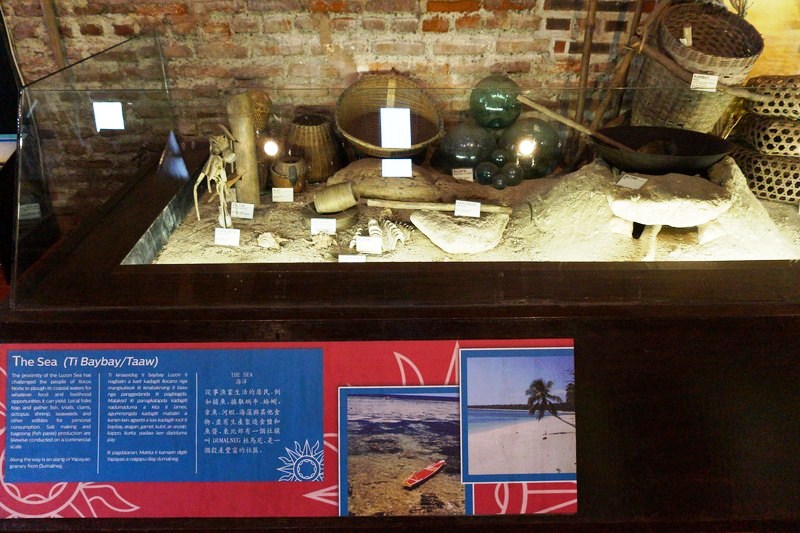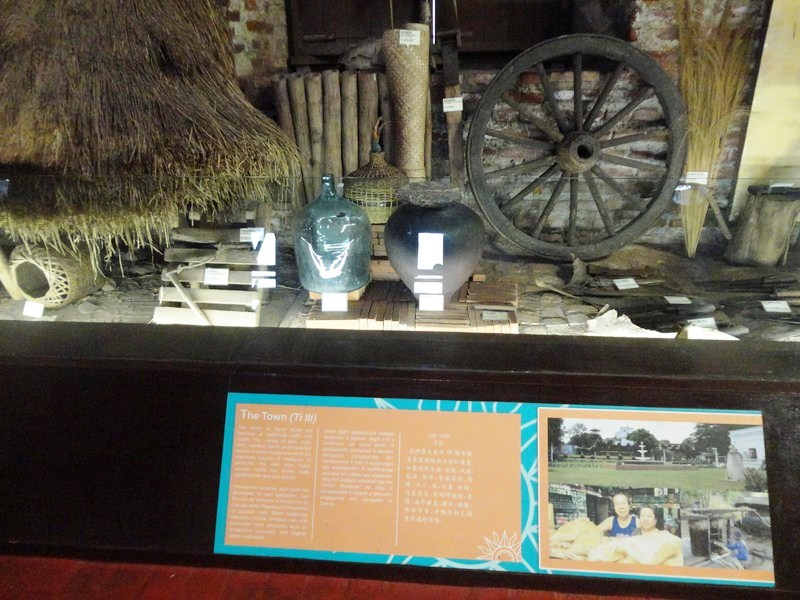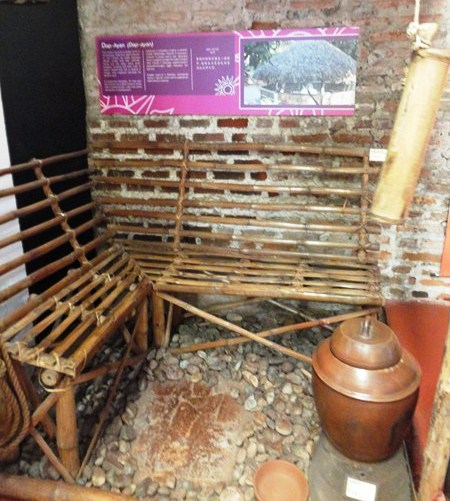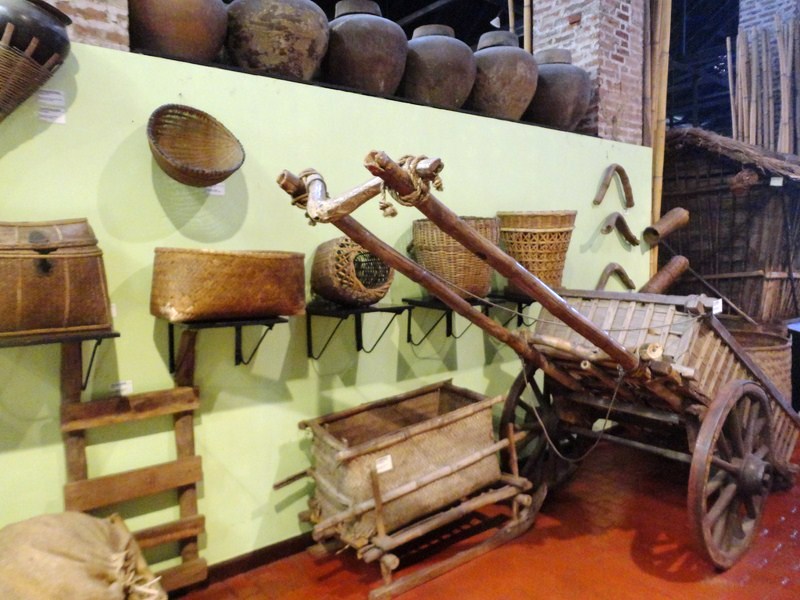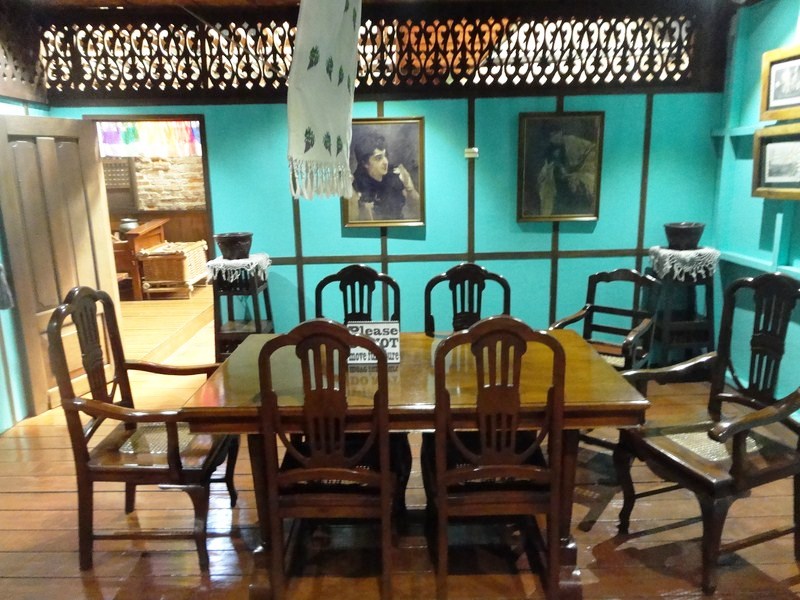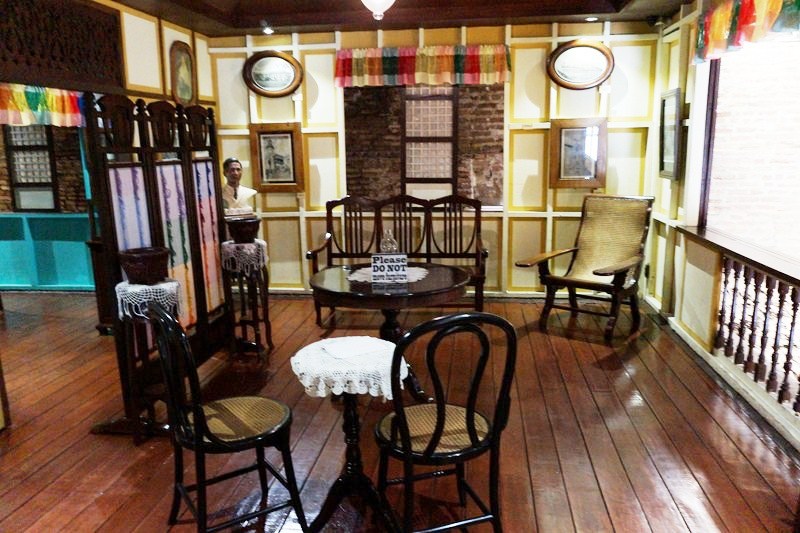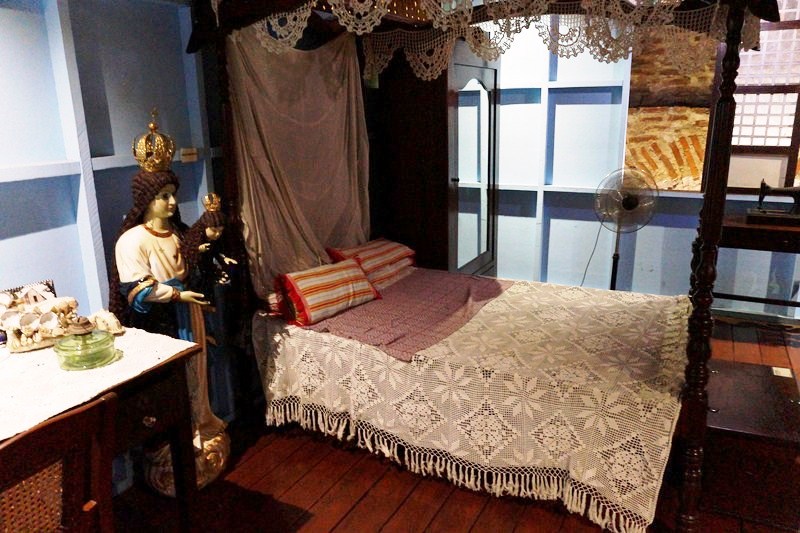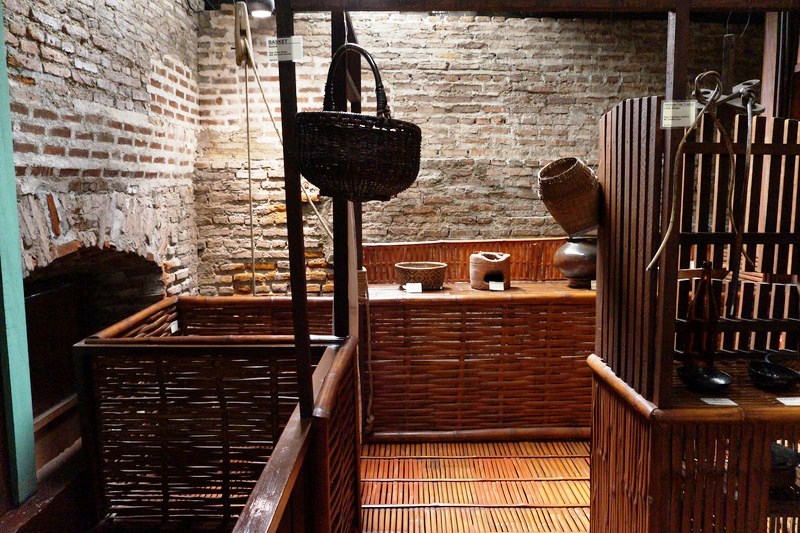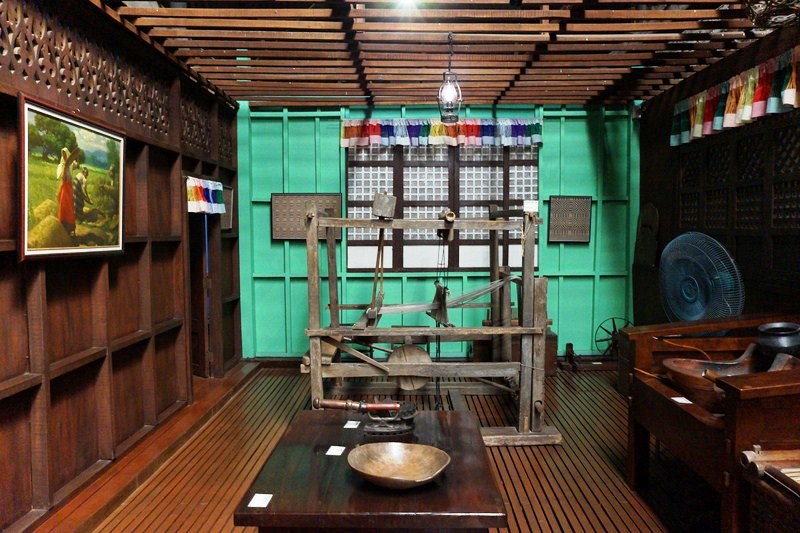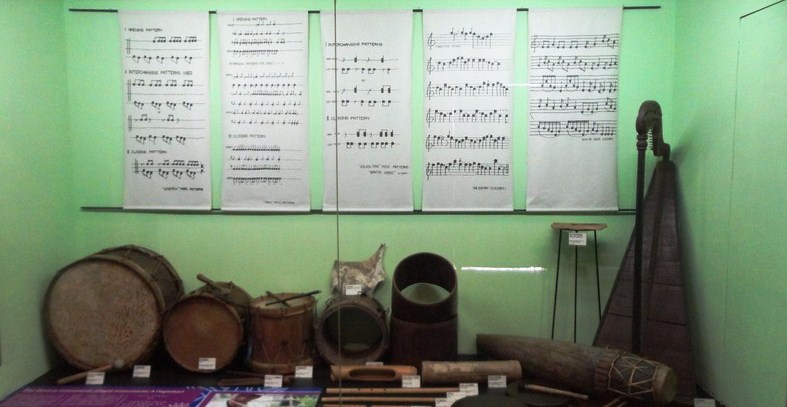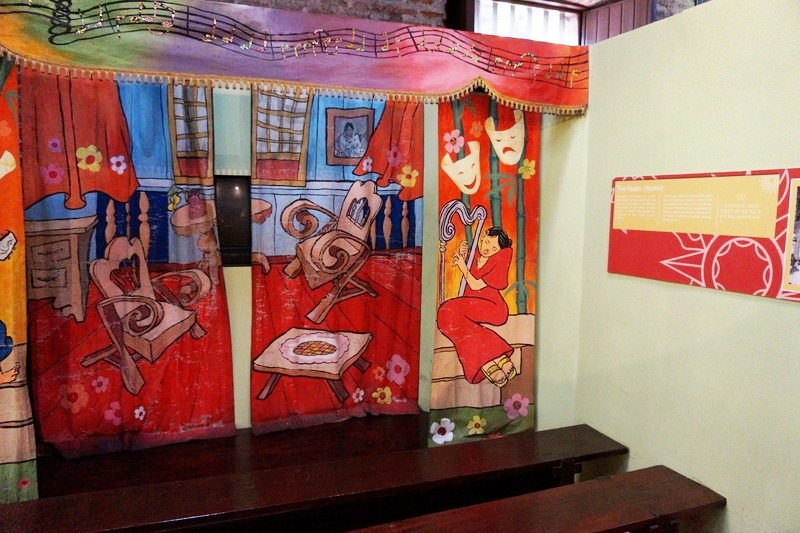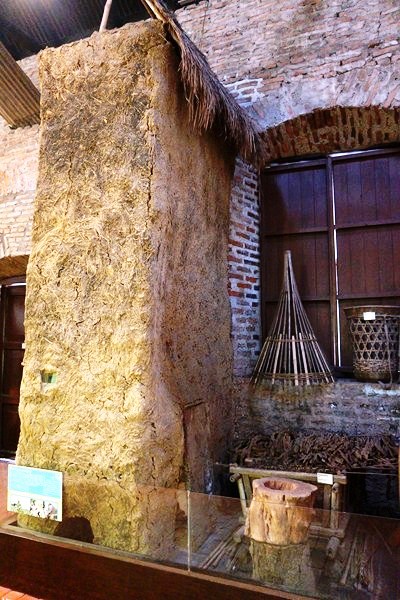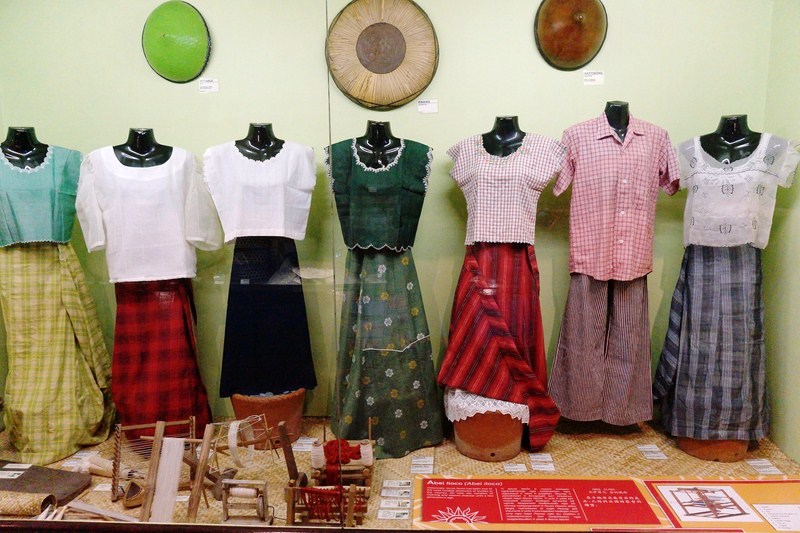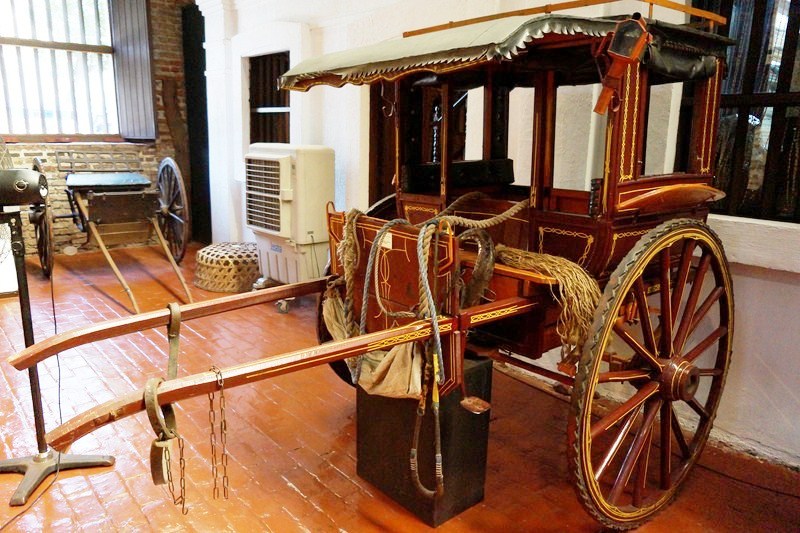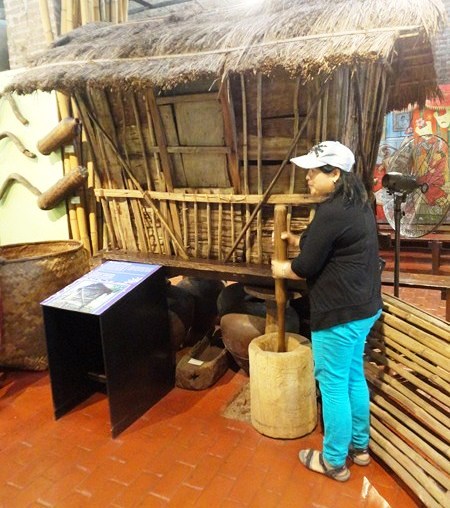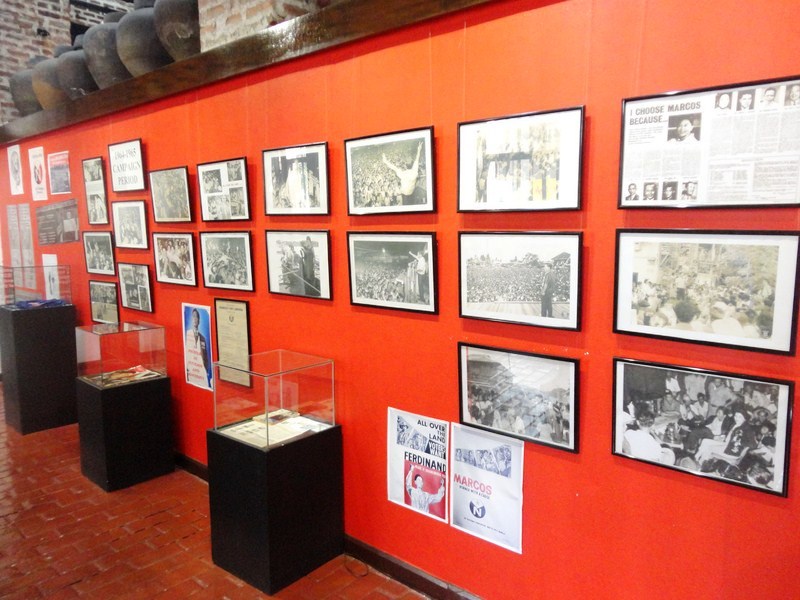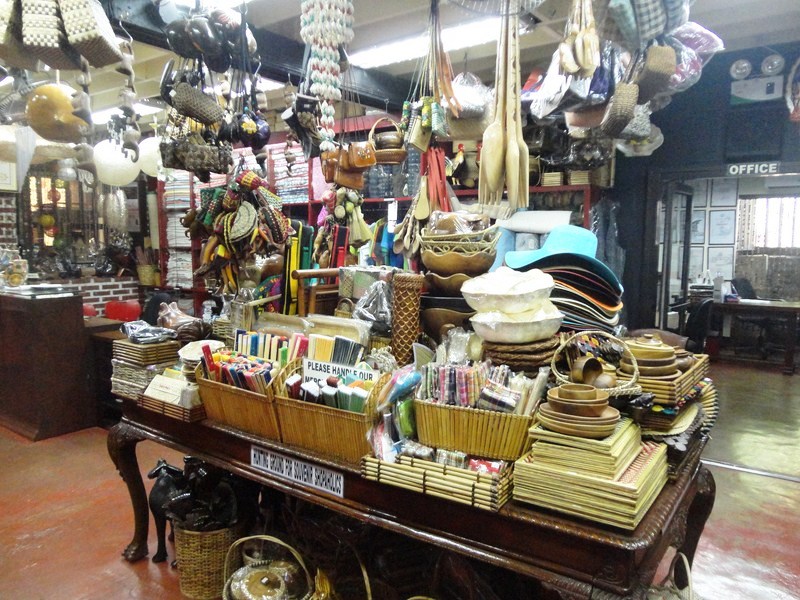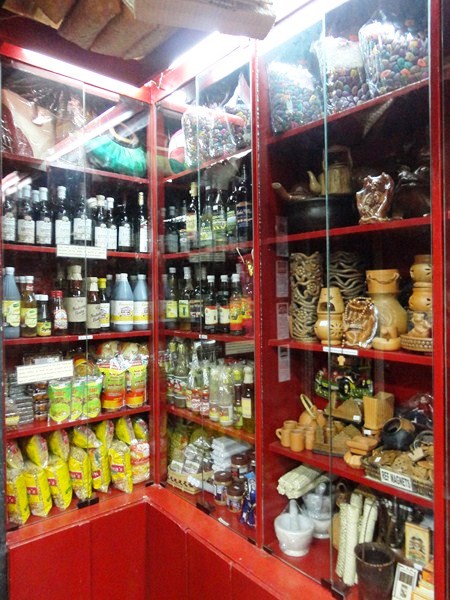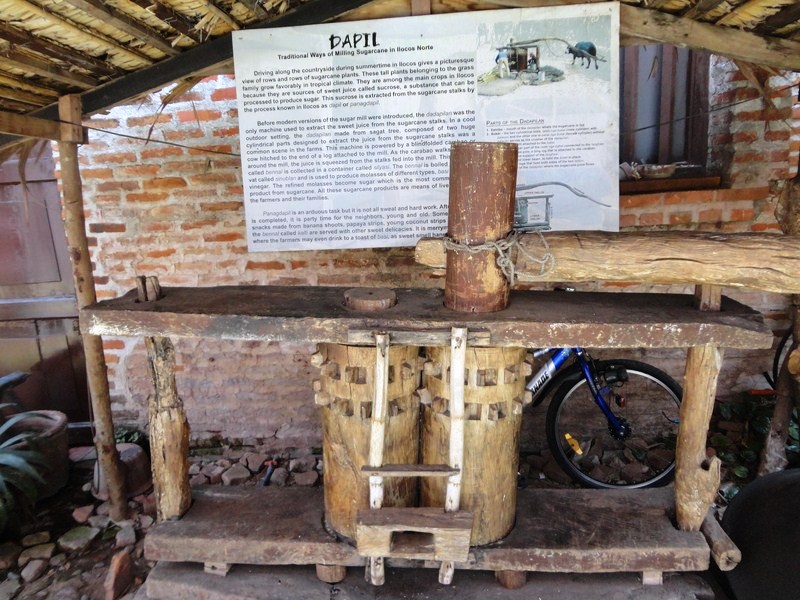Also called the Laoag Museum and Gameng (an Iloco word meaning “treasure”), this impressive an snazzy lifestyle museum, managed by Gameng Foundation Inc., is located beside the city hall and a block away from the city plaza.
One of the better ethnographic museums in the country, it is housed in the restored former Spanish-era Camarin de Tobacco de la Tabacaler or tobacco storage house which was erected in 1878. Opened last December 31, 1999 by Gov. Ferdinand R. Marcos, Jr., it replaced the Ilocandia Museum of Traditional Culture which dates back to 1977.
At one corner of the museum is a 75 cm. excavation done by the National Museum on February 2004 exposing the different floor levels of the building.
This museum is divided into 15 main sections, each one narrating an aspect of the province’s history. The items are arranged by themes such as ‘The Land (Iti Tak-Dang),” “The Sea (Ti Baybay/Taaw),” ‘The Highland (Kabanbantayan Ken Tanap),” “The Farm (Ti Talon),” “The Market (Ti Tiendaan),” and “The Town (Ti Ili).”
The Laud (West) Gallery displays a dap-ayan (meeting place) while the Daya (East) hallway describes the beginnings of Ilocos Norte.
At the Abatagan (South) end of the museum stands a replica of a typical, two-storey, fully-furnished bahay na bato (stone house, Ti Daan nga Balay) whose façade is based on the Lazo Residence in Bacarra.
Also on display are properly labeled samples of abel iloko and musical instruments such as the pito (bamboo flute), kulkulutong (bamboo zither), the ludag (log drum) and tangguyob (carabao horn).
A teatro (theater) for small groups has, behind the curtains, a monitor for a 15-minute video showing the musical traditions of the province.
The museum’s West Gallery displays a typical pugon made with bamboo slats, mud, dried leaves and carabao dung. Derived from the Spanish word fogon meaning “furnace,” it is a structure where tobacco leaves are flue-cured.
Also on display are a large collection of Ilocano, Igorot and Itneg traditional clothing; weapons; accessories, household utensils, calesas, ceremonial objects, an alang (Itneg house) and small furniture of the ethnic tribes of Northern Luzon. One room is dedicated to the late Pres. Ferdinand E. Marcos.
There is also a museum gift shop (Museo Sarusar Shop) selling travel guide books and the very best Ilocos Norte souvenirs (ref magnets, key chains, pottery, bags, baskets, shellcraft, woo carvings, etc.) and popular food products such as cornik and basi. Outside the museum is a dapil (sugar mill).
A useful brochure in English comes with the ticket and everything is also well labeled in English. The visit is best done clockwise.
Museo Ilocos Norte: cor. Gen. A. Luna St. and Don Vicente Llanes Ave., Laoag City, Ilocos Norte. Open Mondays to Saturdays, 9 AM to 5 PM, and Sundays, 10 AM – 5 PM. Tel: (077) 770-4587. Website: www.museoilocosnorte.com. Admission: PhP50.

